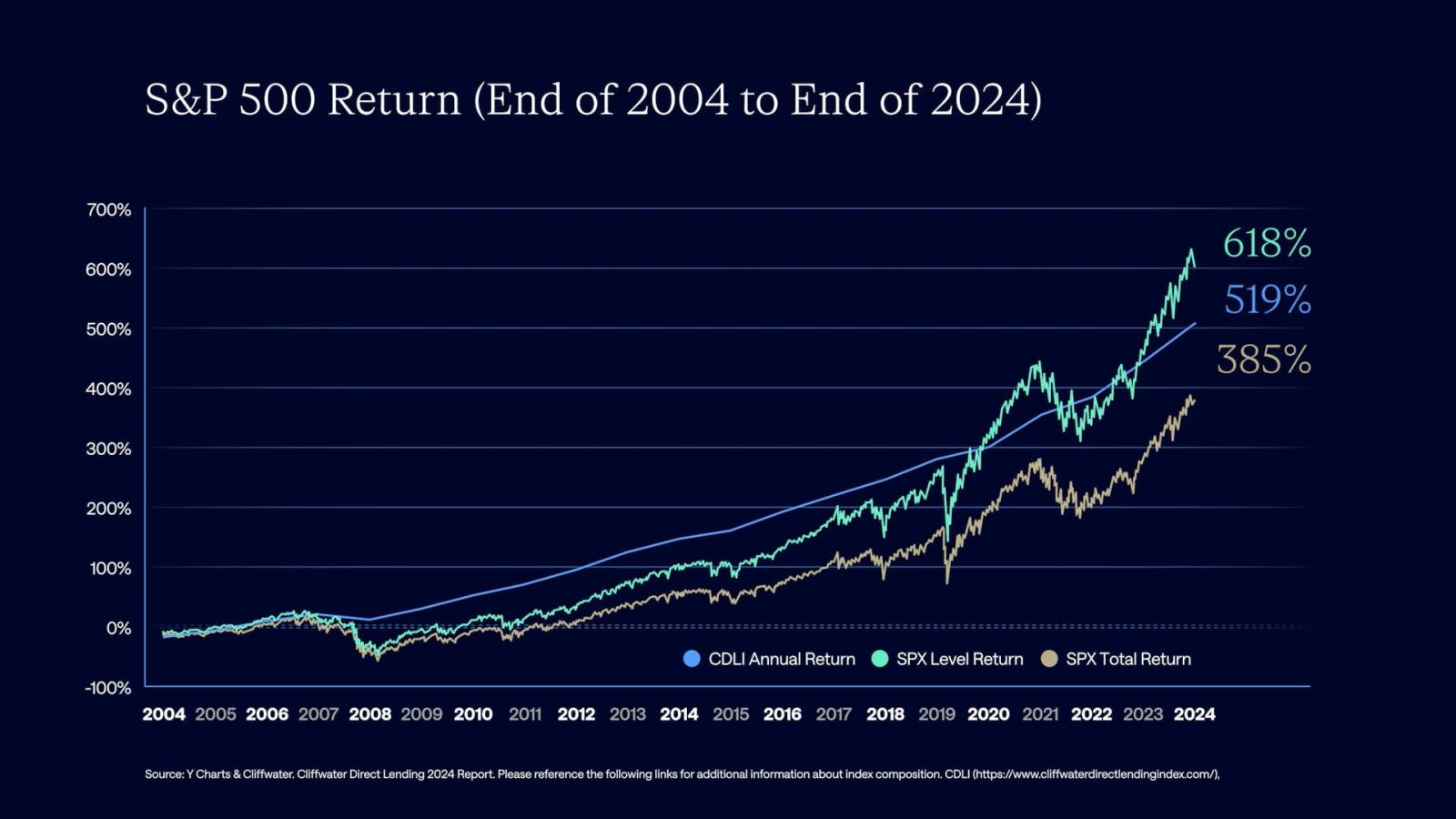At a Glance
- Direct lending has delivered resilience across two decades of market turbulence.
Despite shocks including the Global Financial Crisis and the COVID pandemic, direct lending’s cumulative loan loss rate has remained just over 1% (1.01%). - Returns have been consistently above traditional credit benchmarks.
Over the last 20 years, direct lending has outperformed both high-yield bonds and leveraged loans, maintaining spreads of at least 150–200 basis points year after year. - Direct lending now rivals equities in long-term performance, with less volatility.
Over two decades, direct lending’s total return has been just under 10%—comparable to the S&P 500.
Unlike equities, which deliver higher peaks but deeper troughs, direct lending has offered steadier returns, making it increasingly viewed as a core allocation rather than a niche alternative.
The past two decades of investing have been defined by volatility. Through it all, direct lending has been the asset class equivalent of a metronome, remaining steady through all the swings.
“Over the last 20 years, we’ve had the credit crisis, we’ve had the COVID pandemic,” said Jarrod Phillips, Ares Partner and Chief Financial Officer. On top of those seismic disruptions have been bubbles and busts, oil shocks, inflation spikes, and the most aggressive rate-hiking cycle in decades—all within the same 20-year span. “During that time, the loss rate for direct lending loans is just slightly over 1%—at 1.01%.”
That record of resilience is striking. In an era when even supposedly safe investments have failed to provide shelter, and in markets where downturns have punished even the strongest asset classes, direct lending’s ability to hold losses low underscores its staying power. It also explains how private credit has evolved from a once-overlooked segment of the credit markets into a structural pillar of the financial system. Direct lending hasn’t just been consistent—it’s also been remarkably reliable as a source of return.
“If I give you money, I need to get a return back,” Phillips said. “The direct lending market has delivered a return over that 20-year period that’s been well in excess of both the high-yield and leverage loan markets.” For investors accustomed to seeing spreads compress or disappear over time, the durability of that edge stands out.
That’s one reason direct lending has moved from the margins of finance to the mainstream of institutional portfolios—an advantage that has persisted across cycles. “It’s stayed pretty consistent year to year, at least 150 basis points to 200 basis points spread,” Phillips added, “but has actually beaten it over that period by more than that.”
What makes that performance notable is the conditions under which it was achieved. Two decades of disruption didn’t derail it—in fact, the disruption helped validate direct lending as a core institutional allocation, judged not only against other forms of credit, but increasingly against equities as well. “If you look at the S&P 500’s returns over the last 20 years and compare it to the direct lending market,” Phillips said, “you’d actually find that they’re just about the same.”
But there’s a clear difference in how those returns were earned. “The peaks in the equity market are higher than the loan market, but the valleys are lower as well,” Phillips noted. Equities compound through cycles of sharp gains and steep losses, while direct lending has advanced on a steadier trajectory. “The direct lending market has provided a steady and consistent return, just under 10% over that 20 years,” Phillips said. “It has been a steady delivering asset class that actually isn’t too far off the S&P 500’s returns over the exact same time period.”
For investors, that combination—equity-like returns with far less volatility—is rare. It’s helped transform direct lending into one of the defining asset classes of modern markets. In a financial world defined by turbulence, the steady beat of direct lending has become not just an alternative, but a foundation.





